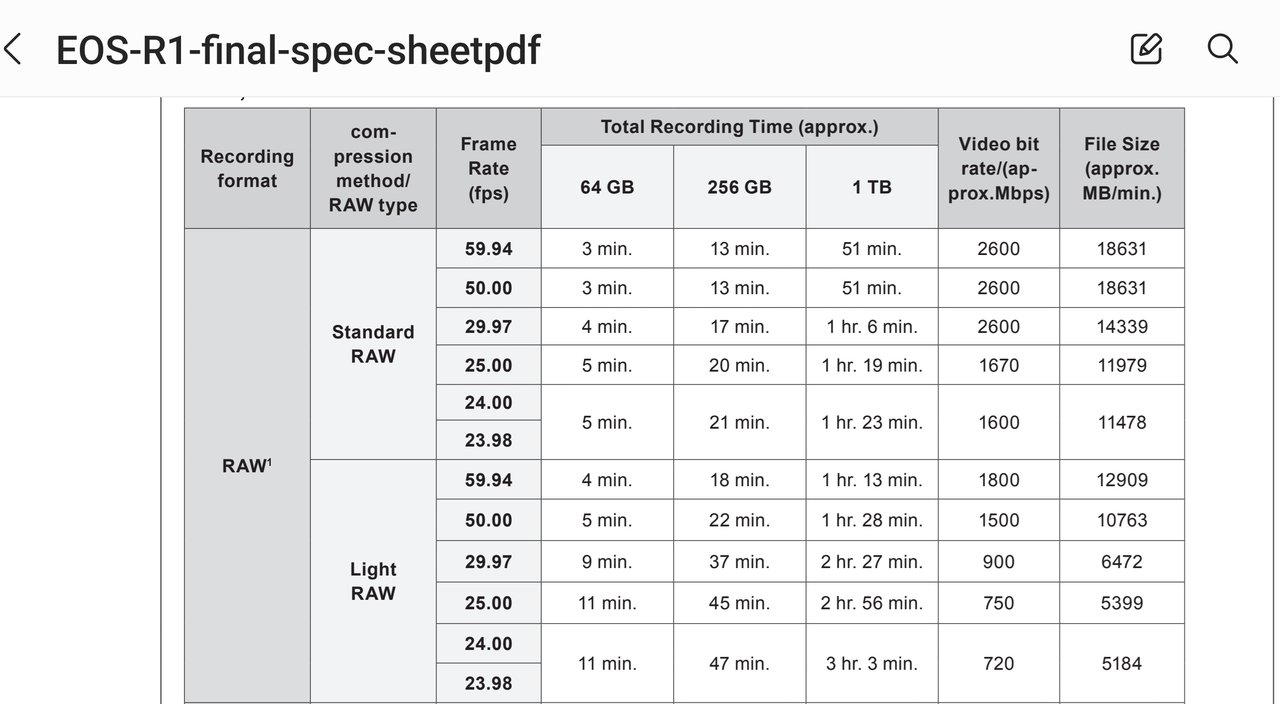Not according to Canon Europe.
Experience the power of EOS R1 Full Frame Mirrorless Camera. Unparalleled autofocus capabilities, perfect for capturing action shots and sport competitions.

www.canon-europe.com
Canon R1 CRM:
6K RAW (59.97p): Approx. 2600 Mbps
6K RAW (29.97p): Approx. 2000 Mbps
6K RAW (25p): Approx. 1670 Mbps
6K RAW (50p/24p/23.98p): Approx. 1600 Mbps
6K Light RAW (59.97p): Approx. 1800 Mbps
6K Light RAW (50p): Approx. 1500 Mbps
6K Light RAW (29.97p): Approx. 900 Mbps --> this is raw light (compare it to the C400 ST)
6K Light RAW (25p): Approx. 750 Mbps
6K Light RAW (24p/23.98p): Approx. 720 Mbp
For C400
12-bit Cinema RAW Light LT:
FF / 6000 x 3164 / 50P [1160 Mbps]
FF / 6000 x 3164 / 25P [576 Mbps] --> This is cinema raw light LT
S35 / 4368 x 2304 / 50P [611 Mbps]
S35 / 4368 x 2304 / 25P [306 Mbps]
S16 / 2184 x 1152 / 50P [154 Mbps]
S16 / 2184 x 1152 / 25P [77 Mbps]
12-bit Cinema RAW Light ST:
FF / 6000 x 3164 / 50P [1780 Mbps]
FF / 6000 x 3164 / 25P [886 Mbps] --> This is cinema raw light Standard
S35 / 4368 x 2304 / 50P [939 Mbps]
S35 / 4368 x 2304 / 25P [470 Mbps]
S16 / 2184 x 1152 / 50P [236 Mbps]
S16 / 2184 x 1152 / 25P [118 Mbps]
12-bit Cinema RAW Light HQ:
FF / 6000 x 3164 / 25P [1800 Mbps]
S35 / 4368 x 2304 / 50P [1910 Mbps]
S35 / 4368 x 2304 / 25P [954 Mbps]
S16 / 2184 x 1152 / 50P [479 Mbps]
S16 / 2184 x 1152 / 25P [240 Mbps]
-----
For Comparison
Canon R1,
6K Light RAW (29.97p): Approx.
900 Mbps
Canon C80, 12-bit
Cinema RAW Light LT: FF / 6000 x 3164 / 25P
[576 Mbps]
Canon R5, 8k Raw (Light) (29.97p/25.00p): Approx. 1700 Mbps
Canon R5 II, 8K RAW Light (29.97p): Approx. 1670 Mbps

 youtu.be
youtu.be


